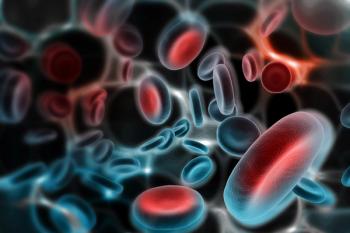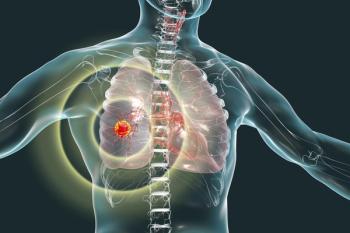
Risk Stratification, Corticosteroid Prophylaxis Reduces GVHD in Haploidentical Transplantation
Risk-stratification based on a biomarker and associated prophylaxis could help reduce the incidence of graft-vs-host disease in patients undergoing haploidentical transplantation.
Risk-stratification based on a biomarker and associated prophylaxis could help reduce the incidence of graft-vs-host disease (GVHD) in patients undergoing haploidentical transplantation, according to a new randomized study.
In spite of recent advances in prophylaxis strategies for avoiding GVHD, the complication “remains a common problem, with high rates, in particular, for haploidentical stem cell transplantation (haplo-SCT),” wrote researchers led by Xiao-Jun Huang, MD, of Peking University People’s Hospital in Beijing.
In the new prospective, open-label, randomized study, researchers tested whether using a ratio of CD4 and CD8 cells as a biomarker, and then treating high-risk patients with corticosteroids, could lessen the incidence of GVHD. The results were
The study included a total of 228 patients with hematologic neoplasms undergoing haplo-SCT. Of those, 83 patients were classified as low risk, with a CD4:CD8 ratio of less than 1.16 (group A); 145 patients were considered high risk (CD4:CD8 ≥ 1.16), and those high-risk patients were randomized to either receive corticosteroids (72 patients, group B) or not receive the prophylaxis (73 patients, group C).
The low-risk group A and high-risk prophylaxis group B had similar cumulative 100-day incidences of acute GVHD grades II to IV (26% vs 21%; P = .43). Both were significantly lower than the high-risk patients who did not receive prophylaxis, group C (48%; P < .001).
On multivariate analysis, the use of risk stratification-directed prophylaxis with the low-dose corticosteroid did significantly reduce the incidence of acute GVHD compared with no low-dose corticosteroid, with a hazard ratio (HR) of 0.66 (95% CI, 0.49–0.89; P = .007). The corticosteroid prophylaxis was also significantly associated with the time to platelet recovery, with group B having a shorter time than either group A or group C (P < .05 for both).
The study also confirmed previous results that the CD4:CD8 ratio is significantly associated with acute GVHD, after excluding the effects of the corticosteroid prophylaxis, with an HR of 1.943 (95% CI, 1.115–3.387; P = .019).
The benefit seen with regard to GVHD did not appear to come at the expense of increased adverse events. Incidences of post-transplantation lymphoproliferative disorder, hemorrhagic cystitis, bacteremia, and other complications were similar among the three groups, while the prophylaxis group had a lower incidence of osteonecrosis of the femoral head and secondary hypertension, compared to the other two groups. The 100-day and 1-year incidences of relapse and non-relapse mortality were similar between the three groups.
“This stratification-directed prophylaxis strategy platform can be used to design future studies to determine optimal combinations of biomarkers and methods and to investigate optimal doses and timing of corticosteroids for the prevention of GVHD in allo-SCT settings,” the authors concluded.
Newsletter
Stay up to date on recent advances in the multidisciplinary approach to cancer.


















































































